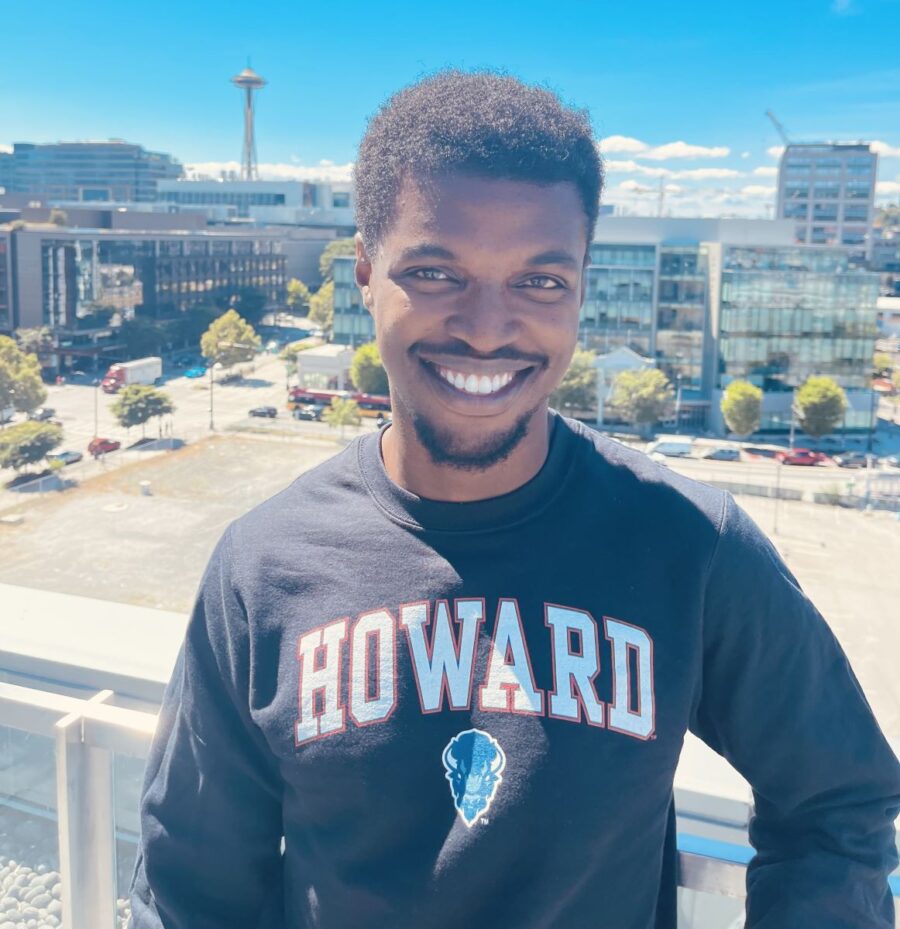This semester, there’s a new face on Howard University’s campus. For the 10th year of the Google in Residence program, Abenezer Dara is the new teacher for first-year computer science students.
The Google in Residence program partners with 14 institutions across the country to pair Google employees with students interested in tech. The participant schools are designated historically Black colleges and universities (HBCUs) and Hispanic-serving institutions (HSIs); collaborating institutions include Hampton University, Morgan State University, the University of Texas at El Paso and California State University, Fullerton. Dara will be spending the fall semester on campus and said he’s currently working with about 300 students across a few classes.
Dara, a Dartmouth College grad, said he came to the US from Ethiopia for school in 2016. He joined the YouTube Creative SRE team after graduation. In school, he said he did a lot of teaching assistant jobs and worked with tutors. Although he enjoyed his introductory computer science course, he said that many dropped out because of a lack of support.
Those introductions, he told Technical.ly, are crucial because that’s when people decide if they want to formally pursue a career.
“If we introduce it in the wrong way, it might come off as too difficult or too intimidating, and people also might not see people who look like them succeeding in these roles,” Dara said. “My goal is to give students a really good introduction to computer science, show them that they belong and that they can do it.”
The program, now in its 10th year, started off with one person leading a class of 83 students in 2013. Now, Dara is teaching 300 students in total, with the help of six teaching assistants — all Howard upperclassmen who have already taken the Google in Residence class — hired through Google.
“I’m immensely proud that we have positively impacted more than 8,000 HBCU and HSI students through our Google in Residence program over the last decade,” said Melonie Parker, Google’s chief diversity officer, in a statement. “We’re passionately working to build equity for HBCU and HSI students to ensure they have the skills they need to succeed in tech when they graduate and to support greater diversity in the tech industry.”
In his class, Dara tries to show some of the realities of working as a technologist. The classes involve a 30-minute lecture followed by a 30-minute practice. Last week, he gave assignments based on actual questions from a coding interview to try to show students what that would be like.
Sometimes, he purposely makes mistakes and shows the students how he would fix them to give them confidence in their abilities (and the knowledge that even Google technologists mess up on occasion).
“I’m trying to create a culture of you can fail and it’s fine, we are always going to be here to support each other,” Dara said.
Dara added that in his early college days, he didn’t usually take advantage of office hours nor know he could just go and get extra help. In his classroom, he tries to really encourage students to use the time. He also tries to make it a fun, safe space where students can come and hang out even if they don’t have any questions or want help with someone outside the course. He’s currently helping one student interested in developing music algorithms and another who wants to build a search engine tool.
“I want people to feel like: If I want to study this stuff, I can do it,” Dara said. “If they don’t want to go with computer science, I want it to be because they’re not interested in the material — not, because they find this too challenging.”
Before you go...
Please consider supporting Technical.ly to keep our independent journalism strong. Unlike most business-focused media outlets, we don’t have a paywall. Instead, we count on your personal and organizational support.
Join our growing Slack community
Join 5,000 tech professionals and entrepreneurs in our community Slack today!

Expect even more drones over NJ, Delaware and PA this year — thanks to agriculture, the military and hobbyists

Four ways Trump could upend the tech world in his first 100 days

DC scores massive $3B venture capital quarter to close out 2024



